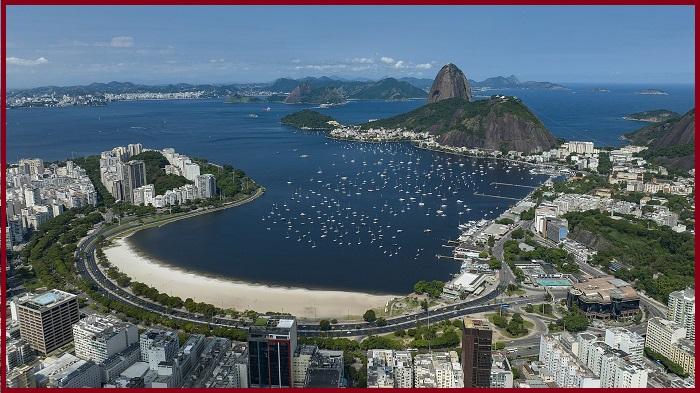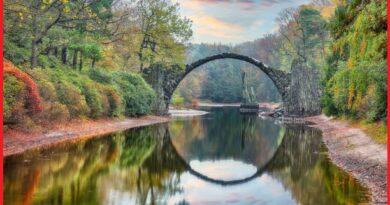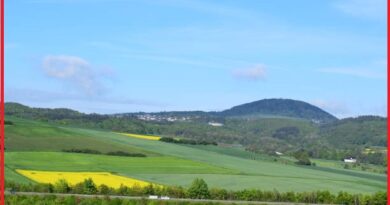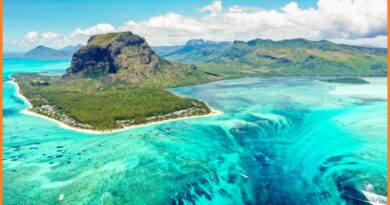Brazil Tourism-7 Ultimate Tourist Attraction in Brazil
Brazil Tourism
Brazil is famous for the presence of rainforests, magnificent beaches, and some beautiful Portuguese architecture. The largest country in South America, It occupies almost half the continent. much of it is tropical, with vast stretches of rainforest, its vibrant culture, scenic beauty, and immense love for football. Brazil’s 7,400-kilometer Atlantic coast is lined with golden-sand beaches, and its interior is filled with mineral resources. The colonial power ruled Brazil until 1822, has strong Portuguese influence is evident in Brazil’s colonial architecture, in decorative arts such as the glazed tiles in its churches. Brazil tourism is greatly admired by various tourist attractions for all tastes, from idyllic beach holidays and jungle explorations to world-class art museums. Here are a few of the places to visit in Brazil that should make it to your life experience.
Best Tourist Attractions in Brazil
Christ the Redeemer, Rio de Janeiro
Christ the Redeemer is a statue of Jesus Christ in Rio de Janeiro, created by French sculptor Paul Landowski and built by Brazilian engineer Heitor da Silva Costa, in collaboration with the French engineer Albert Caquot. The Structure is Constructed between 1922 and 1931, the statue is 30 metres high, excluding its 8-metre pedestal. The arms stretch 28 metres wide. The Statue is made of reinforced concrete and soapstone and gazes out over Rio de Janeiro and the bay from the summit of Corcovado.
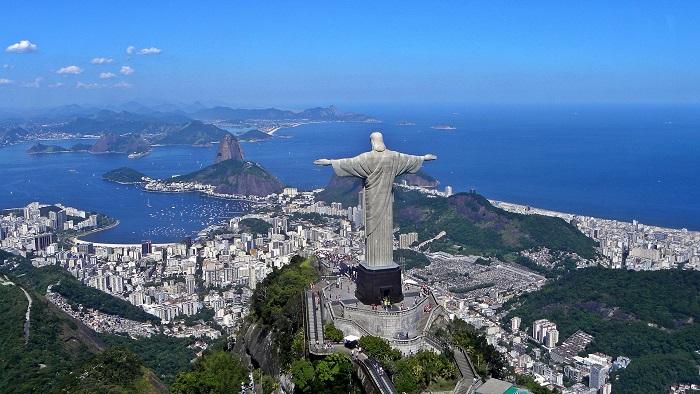
The Statue stand on the 709-meter-high Corcovado mountain and Is part of Tijuca National Park. A rack railway climbs 3.5 kilometres to its top, where a broad plaza surrounds the statue. A mid-point stop on the railway leads to trails through the Tijuca National Park, a huge forest that protects springs, waterfalls, and a wide variety of tropical birds, butterflies, and plants. Several other viewpoints open out within the park. A symbol of Christianity around the world, the statue is the Best tourist attraction in both Rio de Janeiro and Brazil and was voted one of the New 7 Wonders of the World.
Sugar Loaf, Rio de Janeiro
Sugarloaf Mountain is situated in Rio de Janeiro, at the mouth of Guanabara Bay on a peninsula that juts out into the Atlantic Ocean. Rising 396 m above the harbour, the peak is named for its resemblance to the traditional loaf sugar. It is known worldwide for its cableway and panoramic views of the city and beyond. The mountain is one of several monolithic granite and quartz mountains that rise straight from the water’s edge around Rio de Janeiro. Geologically, it is considered part of steep-sided rock outcroppings known as Inselberg-Bornhardts. The mountain is protected by the Sugarloaf Mountain and Urca Hill Natural Monument, created in 2006. This became part of a World Heritage Site declared by UNESCO in 2012.
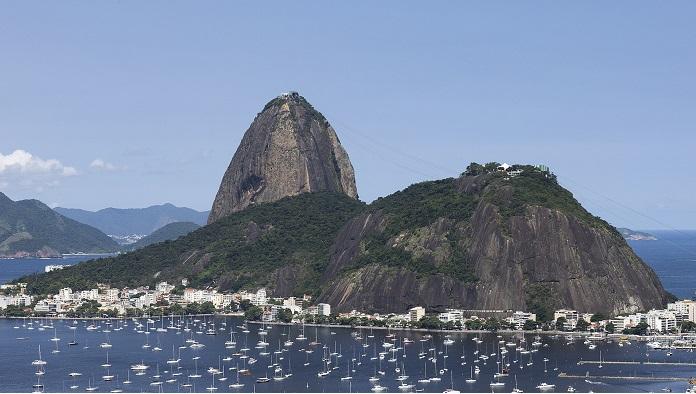
There are rock climbing routes on Sugarloaf two other mountains in the area with technical rock climbing, Morro da Babilonia and Morro da Urca. The summit is one of the best places for views of Rio and the harbour. One can take the thrill of riding suspended in a cable car between Sugar Loaf and the Morro da Urca, a lower peak from which a second cableway connects to the city.
Also, read- 7 Best New Zealand Hiking trails with Majestic landscapes
Iguacu Falls, Brazil Tourism
The Iguacu river drops spectacularly in a semicircle of 247 waterfalls at the point where Brazil, Paraguay, and Argentina meet. Some of the falls are more than 100 meters high. Visitors will get the broadest panorama from the Brazilian side. A tower gives you different perspectives, and one bridge reaches all the way to one of the largest, known as the Devil’s Throat.
For a closer view, You can cross to the Argentinian side farther into the centre of the falls. The two sides offer different perspectives and views, so most tourists plan to see both. The Waterfalls are protected by the UNESCO-acclaimed Iguacu National Park, where subtropical rainforests are home to more than 1,000 species of birds and mammals, including deer, otters and ocelots.
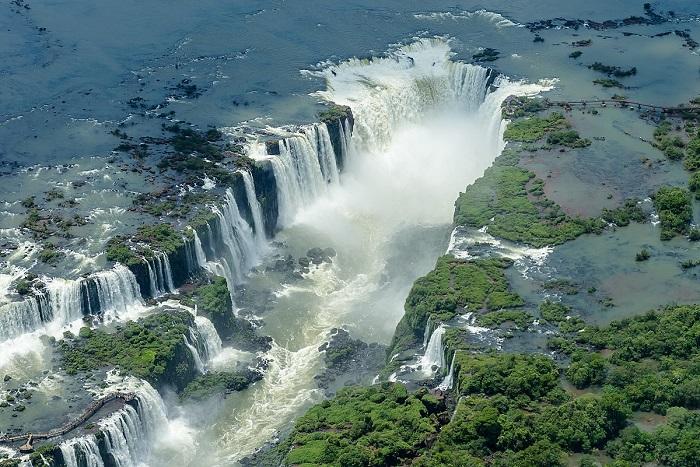
Salvador’s Pelourinho, Brazil Tourism
Salvador de Bahia was the first capital of Brazil, from 1549 to 1763, and witnessed the blending of European, African and American-indian cultures. It is situated in a small peninsula that separates Todos os Santos Bay from the Atlantic Ocean on the northeast coast of Brazil. A special feature of the city’s old town is the brightly coloured houses, often decorated with fine stucco work. Salvador de Bahia’s historic centre is an eminent example of Renaissance urban structuring adapted to a colonial site. The Cidade Alta or Upper Town of Brazil’s former colonial capital has been named a UNESCO World Heritage site for its exceptional collection of 17th- and 18th-century colonial buildings. It is the finest such ensemble in South America. In Pelourinho, the old quarter you’ll find Salvador’s most beautiful churches and monasteries, built at a time when Brazil was the source of Portugal’s riches.
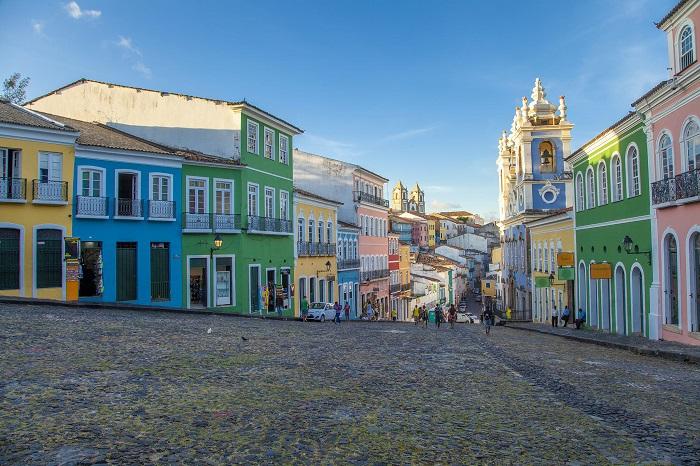
Lencois National Park, Brazil Tourism
Lencois National Park is found in the Northeastern region of Brazil, in a state called Maranhao. The park-like most other parks in Brazil – is quite expansive and sprawls a nearly 70 kilometres of coastline around. A unique feature of this part is that the interiors of the region can be found filled with sand dunes and rollers. In Summer it appears to be a normal sight but it springs up and looks incredible during monsoons as the dunes are filled with lagoons.
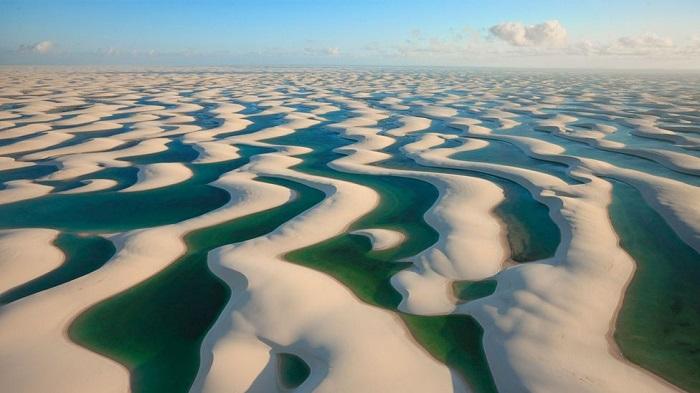
Bonito, Brazil Tourism
Situated in the southernmost region of Mato Grosso do Sul, there are numerous attractions around Bonito that make visitors wonder. Bonito is a town and ecotourism hub in southern Brazil. The surrounding area is known for crystal-clear rivers such as the Rio da Prata, a snorkelling destination. The Abismo Anhumas is a huge, stalactite-covered cavern that offers abseiling and diving in an underground lake and ocher-coloured depression Buraco das Araras. The surrounding region includes a number of caves, lakes, waterfalls and a lush forest. There are hundreds of fish all around in lakes and water sources, making it a perfect spot for enjoying.
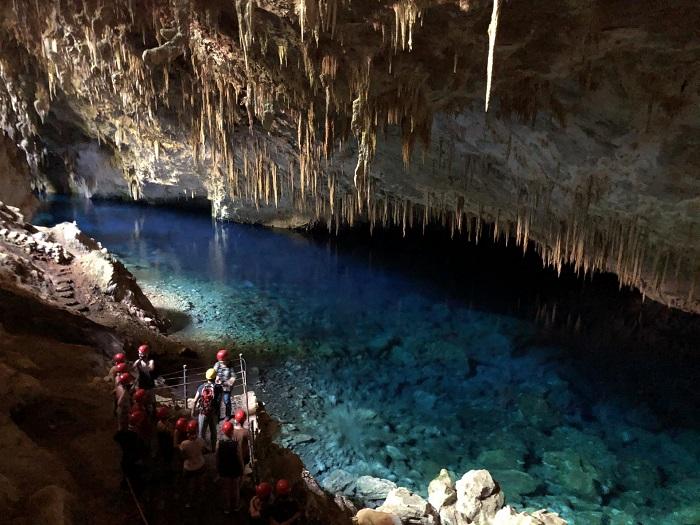
Sao Paulo, Brazil Tourism
Sao Paulo is not only the largest city in Brazil but it is the 4th largest Populus city in World with nearly 20 million residents. It is known for its skyscrapers and robust cultural scene. Dividing the city between its old and new districts, Paulista Avenue is the city’s busiest strip. it is surrounded by a business centre, shopping malls, art galleries, theatres, restaurants and coffee shops. Sao Paulo is known for its concrete jungle and a large number of public parks.
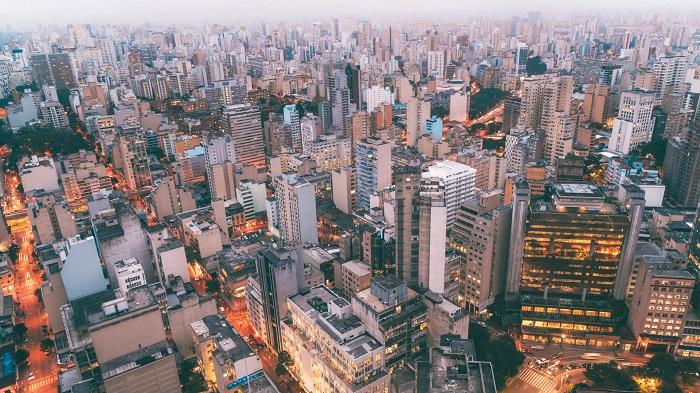
How to reach Brazil
Reaching Brazil is Quiet easy. Flying is the most popular way of getting to Brazil. Sao Paulo and Rio de Janeiro are the largest airports in the country which have direct flights from most of the cities in North America, South America and Europe and from a few cities in Asia and Africa.
